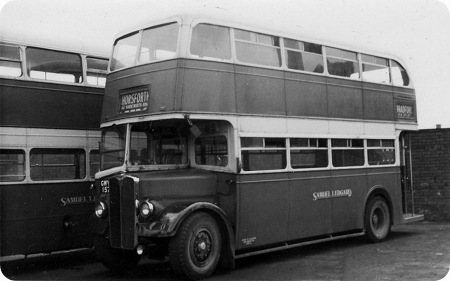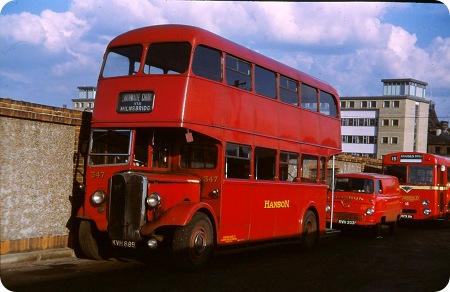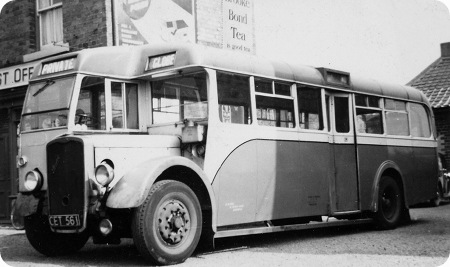Samuel Ledgard – AEC Regent III – GWY 157

Photograph by ‘unknown’ if you took this photo please go to the copyright page.
Samuel Ledgard Ltd
1948
AEC Regent III
Roberts H30/26R
This bus started life with another independent operator, Felix Motors of Hatfield near Doncaster and was number 26 in there fleet, it was new to them in 1948 and was sold on to Samuel Ledgard in 1962.
Samuel Ledgard were different to other bus operators in the fact that they did not have fleet numbers, I don’t know why, maybe you do? if you do please leave a comment.
If you want to know what the livery of Samuel Ledgard looked like there is a colour shot here
This bus has a Roberts body of which I know absolutely nothing, and the only thing that comes up on ‘Google’ is as quoted below which is from the Lincolnshire Vintage Vehicle Society website regarding Colchester Corporation Daimler CVD6 No. 4, if you know anything about Roberts bodies please leave a comment.
“Roberts were an unusual choice of bus body builder – they were more commonly associated with railway vehicles and occasional trams. The body is unusually heavy – weighing about half a ton more than most buses of similar size. This affected the fuel consumption of these vehicles and may have been a factor in the decision to cancel the second batch of five”
To see more regarding the above quote go here
Bus tickets issued by this operator can be viewed here.
A full list of Regent III codes can be seen here.
———
Charles Roberts of Wakefield built this and many other bodies, including Sheffield’s last trams and Blackpool’s Coronation cars.
John Hibbert
———
“It is no wonder that the Roberts bodies were so heavy as the quality, both in structure and in fittings, was of the very highest. They also managed to present a comforting vintage appearance and ambience but without looking "old fashioned." Superb varnished woodwork was everywhere, and the top quality heavy leather seats were of the best. GWY 157 was a fine machine but ended its Ledgard career rather strangely allocated to Yeadon Depot – normally a lowbridge stronghold – and therefore only realistically available for school journeys avoiding Henshaw Lane.
Why there was never a fleet numbering scheme I have no idea, but certainly the firm managed very well without one. Any confusion was normally avoided by allocating vehicles with similar registrations to different depots – there were quite a few cases of this over the years. However, in the run up to the West Yorkshire takeover most of the fleet were allocated fleet numbers before the last minute decision was taken to re-licence many of West Yorkshire’s own withdrawn vehicles instead. For example, PNW 91/2/3 were to be DLW 1/2/3, the RTs were to be DA 1-34 etc etc. What a shame this never came to be!!
Chris Youhill
———
New 1/9/48
AEC Regent III 0961
Chassis No: 1684
Entered Ledgard fleet 19/01/62
Terry Malloy
———
Although it was unusual for a bus company not to use fleet numbers, I seem to recall that East Kent Road Car also managed to operate successfully without them. Presumably staff simply referred to their buses by the digits on the registration plates?
Brendan Smith
———
26/03/11 – 07:25
Burton upon Trent Corporation operated 6 Guy Arab 111 5LW’s with lowbridge Roberts bodies, delivered 1947. See photograph on p51 May 2009 issue of Vintage Roadscene.
These vehicles also had heavy leather seating and varnished interior timber trim – painted over by the Corporation mid 50’s. They developed a sagging roofline quite early in their lives.
Clive Baker
Quick links to the - Comments Page - Contact Page - Home Page


